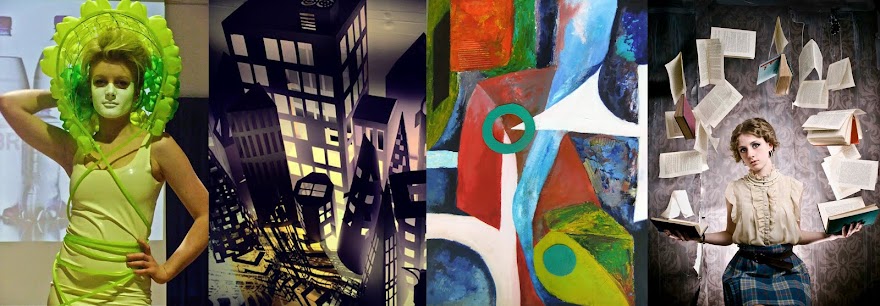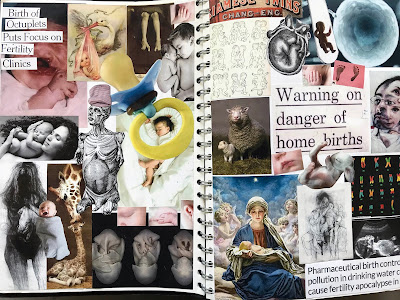|
WEEK 5/6/7
6) Select apt slogans to work with to
relate to your life cycle and begin experimenting with techniques to enrich
your work. Begin to develop layouts,
thumbnail sketches, using text along with image . Develop a series of positive
or negative slogans to accompany your images.
Have a look at http://www.handmadefont.com/
Having
developed your images begin to consider what would be an appropriate font and
style you wish to use to visualise your life cycle in a leaflet format. You are to include a grid for one of your
panels within the leaflet. The size of your Leaflet should be 28 x
14cms. Within each Leaflet you should
produce 1 page that is equally divided into 8 sections [each section is 7 x
7cms] This can be on any of the sides. It could be that the Leaflet is
unfolded to reveal a central page or be any other of the panels Other panels can be developed as you wish
but must look appropriate to the 8 grid section. M2,M3,P4,P2,
7). For each of the boxes you should show a
developed image using the following in any order:
• Abstract:
An
image showing a section, portion or heavily cropped image that has been
developed using paint\expressive mark making.
• Representational:
An
image taken from observation or a photograph that resembles an object or
figure.
• Linear:
An
image using line only but can involve colour and surface additionally.
• Collage:
An
image using found materials newspapers, magazines, fabrics, metals etc.
• Pop Art:
An
image which uses symbols, signs and other well understood images within our
culture i.e. male ♂ and female ♀ symbols, x and y
chromosomes, kisses xxx, targets, +,
= signs → ? ♥ £ † $,
icons of popular culture, film stars, pop stars, images of consumerism
e.g. packaging labels, advertising, domestic appliances.
• Photographic:
This
includes photogrames, location shots, studio set ups, black and white,
colour, digital photography experiments with Polaroids.
• Photomontage:
Collage
using photographic imagery cut and pasted together. Humorous or satirical images e.g. Monty
Python’s Meaning of Life.
• Text:
An
image made up entirely from layered text using provocative statements,
information, famous sayings, a line from a poem, personal important diary
entry dates etc. Your message should
be clear and emphatic and come from your life cycle.
8) Produce at least 2 mock-ups for your
leaflet. These should show different
placement and ideas for the scanned in print outs showing sections, details,
heavily cropped areas of interest etc. P3,M2,M3,
9) Construct your leaflet by scanning in
chosen images from your sketchbook and placing these within the leaflet
format. Be prepared to use photoshop
to edit, merge and layer images so that your text and image work well within
this format. Create varying ideas and
be prepared to be patient with your technology!
10) Before you start printing, make sure you
are completely happy with your outcome.
Let a tutor check finally your
rough colour print outs before you print finally.
11)
Make sure you have annotated your sketchbook paying particular attention to
your decision making regarding location photography and graphic image making
within this project.
Evaluations for
this project
You
should answer questions in depth. You should use thumbnail sketches, diagrams or scanned
imagery to make your points clearer. Evaluations should be a minimum of 500
words each word-processed and checked for spelling with images to make your
points clear .
EVALUATION GRAPHIC IMAGE MAKING P4,M1,D1,
Pick
2 of your graphic images that you feel are important within your leaflet and
evaluate them in minimum of 800 words:
1. Describe the two
pieces, what techniques and decision making have you decided upon to manipulate them and why they are effective
for your theme and communicate the’ tone’ of your idea. ie scratchy writing to suggest anger or
teenage angst or soft vintage filters
on Photoshop to suggest time and marriage past. How successful do you think these graphic
effects are within your work and why?
2. What symbols have you used within your
graphic images on any parts of the leaflet or sketchbook? Symbols are universally understood such as
kisses, crosses, thumbs up, hearts, ying and yang, religious symbols etc
2. How have you edited
your images to fit the format of the leaflet, what did you do to these? Write in detail describing your efforts
within Photoshop, Adobe Bridge, cropping, saturation, tone, contrast,
brightness, clone tools etc.
3. Which designers or
artists have helped you to create a
graphic style, and how can you describe the style you have adopted? ie you could use words such as surreal,
distressed, montage, chaotic, simplified etc
4. What do you want
the viewer to think when they see these images - a feeling for the moment, a
sense of nostalgia, atmosphere, poignant reflection.
5. How has text
appeared on your leaflet? What font
have you chosen and what feel have you tried to communicate?
7. Of the differing approaches to image making
that you were asked to explore, which final images do you think are the most
successful and why? Discuss each approach in turn. Consider mentioning things such as
formal elements, aesthetics, the use of tactile qualities, markmaking,
simplicity, linear effects, layout, experimental use of media.
8. How would you resolve, modify or change the
final piece of work you have produced if you had a further 5 weeks of study.
Do you think you have used your time wisely within this project? How have you used lessons, private study
times and have you stuck to the interim homework deadlines?
EVALUATION LOCATION PHOTOGRAPHY P1,P 4,M4,D3
1. Explain what you
understand by the term location photography, what kinds of photography do
you think this covers?
2. What photographic equipment
did you use to capture your photographs?
Please detail this and the settings you used on your camera/phone.?
3. Who did you look at for this project and
how did their work impact upon your
ideas? Please be specific ie discuss
elements of atmosphere, composition or concept that helped your work.
3. How do your
photographs relate to the location photographers you were asked to look at?
5. Compare one of your favourite own photographs on location in relation to one of the
photographer’s pieces.
6. What kind of organisation of people and
places have you had to do to arrange for your shoots to take place? Discuss
your intention of location, composition, lighting, shutter speed, filters,
and any other production techniques, use of dark room or digital, editing
that you used to modify or enhance your image?
7. Which 2 best photographs did you create on
location and how did you produce these? If they were digital, can you discuss
editing you did?. What have you done
to edit these and what programs have used to do this. ie Photoshop
and Adobe Bridge, etc
|






















